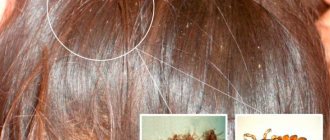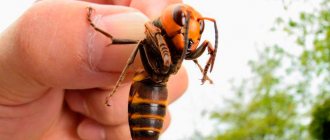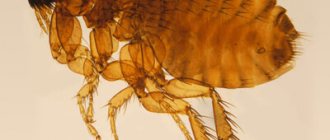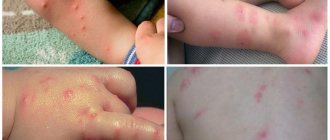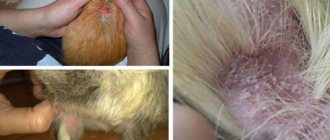Many pet cat owners are familiar with the problem of fleas appearing in their pet's fur. These blood-sucking insects not only cause serious discomfort to the animal, but can also carry dangerous diseases. The more fleas there are, the higher the risk of an allergic reaction, dermatitis or infection. Therefore, you need to learn how to detect these parasites in time and know how to get rid of them.
Fleas are common blood-sucking insects that live in animal fur. These parasites have a flattened body, thanks to which they easily move in the fur. Capable of jumping high - up to 30 cm. They bite through the skin and feed on the pet's blood, usually living on the stomach, near the ears - in those places where the skin is thinner.
How to tell if a cat has fleas
Each flea is small in size - 2-3 mm, and drinks little blood. The danger of infection by these insects is that they multiply quickly. A large number of parasites causes serious discomfort to the cat. They can cause the development of anemia, dermatitis, and allergic reactions. They carry worms and serious infectious diseases. Due to constant itching, the pet becomes irritable, and scratching the skin can cause infection.
Flea infection is especially dangerous for kittens and animals with weak immune systems. When there are a lot of insects, they can even bite a person. Therefore, you need to know what symptoms you can use to understand that your cat has fleas:
- the pet has become restless, irritable, and aggressive;
- his appetite decreased, he began to sleep poorly;
- often itches, licks itself intensively, rubs against the floor and walls;
- irritation or an allergic reaction appears on the skin;
- you can notice red spots, scratches, bleeding wounds;
- The condition of the fur has worsened: it has become dull and falls out.
How to check a cat
To understand that a cat's behavior change is caused by flea infestation and not by other insects or diseases, you need to examine it. Use your hands or a comb to part the fur, examining the skin. When infested with fleas, not only wounds and red spots on the fur will be noticeable, you can detect the insects themselves and traces of their vital activity. These are black dots, light small eggs.
You can place your pet on a white sheet or towel and comb the fur well with a fine comb and slicker brush. Black dots and the insects themselves will be immediately visible on white. To distinguish flea excrement from ordinary dirt, you need to slightly wet it. They will turn brown or red because they contain blood.
How can a domestic cat become infected with fleas?
Some owners believe that if a pet does not go outside, then it cannot have fleas. But parasites often appear in domestic cats. These insects reproduce quickly, live at temperatures of 20-30 ° C, but during the cold season they settle in the basements of houses. The risk of infection is especially high if the cat lives in a rural area. But she can also become infected in the city. How do insects get on a cat's fur?
- from other pets, usually from dogs that walk outside;
- from mice, rats, even pigeons that fly to the balcony where the cat likes to sit;
- enter from the entrance when opening the door to the apartment, through ventilation or cracks from neighbors;
- brought on the shoes or clothes of people from the street.
How does flea infection occur and what is dangerous?
Fleas appear in a lambing cat in the following ways:
- infection occurs during pregnancy;
- parasites are passed on from other pets;
- people bring pests on clothes into the house;
- insects enter the premises from the basement, from the stairwell, from a neighboring infested apartment;
- as a result of re-infection from hatched eggs that were not destroyed during disinsection.
Parasites pose a danger to both mother and cubs:
- After being attacked by blood-sucking insects, kittens experience anemia, stunted growth and delayed weight gain.
- Pests infect kittens with worms and are carriers of dangerous diseases for the cat family: brucellosis, plague, tularemia, typhoid.
- Due to constant itching and burning caused by bites, the cat becomes nervous, irritable, and loses milk.
- Allergic dermatitis appears on the skin of kittens.
- If an animal is allergic to the parasite's saliva, it may cause difficulty breathing, wheezing, and even swelling of the respiratory system, which is deadly for kittens.
Review of flea products
There are many flea treatments sold in pet stores and veterinary pharmacies. They differ in method of application, cost, and the age and size of the pet must also be taken into account. To remove parasites the following are used:
- shampoos;
- sprays;
- drops on the withers;
- collars;
- pills.
Shampoos
The easiest and most popular way to rid a cat of parasites is to bathe him with a special shampoo. They contain essential oils and insecticides. Popular shampoos are Bars, Celandine, Lugovoy, BIO-GROOM, Doctor ZOO, Fitoelita. These products are suitable even for kittens and have many advantages:
- safe for pregnant cats and pets with allergies;
- have no contraindications, are easily tolerated;
- easy to use;
- are inexpensive.
But shampoos are effective only at the initial stage of infection, when there are still few insects. After bathing, the animal's fur acquires an aroma that insects do not like. It lasts 5-10 days. Therefore, you need to take measures to avoid re-infection: treat the apartment and the pet’s place.
Sprays
Sprays are the most effective remedy. Use only in case of severe infection after consultation with a veterinarian. They quickly destroy not only insects, but eggs and larvae. You can use Dana Ultra, Fiprist, Celandine, Frontline, BlochNet, Beaphar and others.
Sprays are toxic, suitable only for healthy adult cats, and can cause an allergic reaction. They should not be used frequently. When using, you must follow the instructions exactly:
- spray the spray from a distance of 25 cm;
- It is advisable to carry out the procedure outdoors or with an open window, wear protective gloves;
- wet all the animal’s fur, avoiding contact with the face and ears;
- For 15-30 minutes, make sure that the cat does not lick the fur or put a special collar on it;
- bathe your pet.
You can also find sprays for killing insects on furniture and objects on sale. They are less toxic, but cannot be used on animals. They are used to treat bedding, carpets, furniture, baseboards
Drops
Drops are the most popular way to get rid of parasites among pet cat owners. It is simple, effective and quite safe. They act quickly and protect against re-infection for 2-4 weeks. The drops are easy to apply; you don’t have to treat the apartment additionally. They are produced in disposable packaging in the form of a pipette. Popular means Bars, Frontline, Stronghold, Advantis, Advocate.
The drops contain insecticides and other substances that have a detrimental effect on insects, but are safe for the animal. In rare cases, they may cause an allergic reaction. Drops are applied to the skin in the withers area, from where they spread throughout the body. They accumulate in the sebaceous glands and are gradually released, repelling or destroying insects.
The drops should be used strictly according to the instructions, taking into account the age and weight of the pet:
- 3-5 days before the procedure, bathe the cat;
- spread the fur at the withers and drip the required amount of product onto the skin, preferably in several places, but not below the shoulder blades;
- Do not pet the cat for 24 hours and keep it away from children, as the substances released are toxic;
- Do not bathe your pet for 3-5 days, try not to let him get wet.
Collar
This is the easiest way to rid your cat of fleas. You just need to put a collar on him. It is impregnated with active substances, with a strong odor that parasites cannot tolerate. Popular collars are Bars, Celandine, Bio Band, Beaphar, Doctor ZOO, Bio Vax.
The effect of the collar lasts for several months. It protects against infection rather than kills insects, so it is more suitable for prevention. It is convenient to use if the cat often walks outside. It is better to use the collar after the fleas have been destroyed in another way. But you cannot use several products at the same time.
Sometimes active substances cause allergic reactions, in which case the collar must be removed and the pet bathed. This product should not be used if there are wounds or scratches on the cat’s neck. It is also necessary to take into account that the collar is worn for a long time, the fur under it cakes.
Tablets and injections
If external remedies are not suitable for the cat, for example, with dermatitis or serious skin damage, tablets are used. They contain insecticides that penetrate the animal's bloodstream. After being bitten, the insect dies. They can only be used as prescribed by a veterinarian. Comfortis or Lufenuron tablets are usually prescribed. They can be given to your pet along with food.
If the cat is in serious condition caused by parasites, an injection may be given at a veterinary clinic. This product is only suitable for healthy adult animals. The drugs Ivermectin, Eprimek and others are used.
Folk remedies
For mild infections, you can use folk remedies. They are also suitable for prevention. There are herbs with a strong odor and insecticidal properties. These are wormwood, tansy, chamomile, geranium. The plants need to be brewed and the wool moistened. Then it is advisable to wrap the cat in a towel and hold it for 15 minutes. It is better to unwrap it over the bathtub, as fleas will jump out. The same decoction can be used to treat the cat's area, carpets, and furniture.
Another effective non-native remedy is bathing with salt. A solution of 100 g per 1 liter of water is used, you need to immerse the cat in it up to the neck and hold for 10 minutes. Then wash with shampoo. After the procedure, comb out dead insects from the fur.
Harmless drops and sprays against fleas
The drops do not penetrate the cat's body, but remain in the superficial layers of the epidermis and are completely eliminated through the sweat glands.
Treatment with drops involves applying the product to a place where it is difficult for the cat to lick it off (the withers, the area between the shoulder blades). Sprays are used to treat the entire surface of the pet’s body, paying great attention to the abdominal areas, folds of the paws, and tail.
Veterinarians most often prescribe the following drugs for antiparasitic treatment of lactating females:
- Stronghold. It does not contain oily components, so it does not remain in the undercoat. It has a complex effect, ridding the cat not only of fleas, but also of helminths and other parasites.
- Frontline. Liquid product, has no side effects. Treatment consists of applying the contents of a disposable pipette to the pet’s fur along the spine and at the withers. The cat will not be able to lick the substance from there, and at this time it is better to separate the kittens from their mother until the product dries completely.
- Inspector. Drops with a low level of toxicity, which are suitable for treating both mother and cubs, and their habitat (beds, bedding, house). The anti-flea effect lasts up to 8 weeks.
- Advantage. The drug in the form of drops does not enter the cat’s blood or milk, dries quickly and is resistant to moisture. The effect of the substance lasts up to 60 days.
How to remove fleas from a cat
If you find fleas on your cat, you need to start fighting them as soon as possible. You can usually do this yourself. You should consult a veterinarian only in serious cases, in the presence of allergies, and also if a kitten under 3 months, a pregnant cat, or an elderly animal is infected.
The fight against parasites consists of several stages:
- Choose a drug depending on the pet’s age and weight, health condition and degree of infection. Be sure to carefully study the instructions and follow them.
- If there are only a few fleas, bathe the cat with a special shampoo. For severe infestation, use spray or drops. Be sure to follow the dosage recommended in the instructions.
- Disinfect the room, cat area, furniture.
- Repair damage caused by insects to your pet. Antihistamines and local antiseptics may be required for wound healing.
- Take preventative measures to avoid re-infection.
Features of treatment of kittens and pregnant cats
Kittens have weak immunity; they more often develop negative reactions to infection with parasites, anemia, and dermatitis. If you suspect the presence of fleas, it is advisable to contact a veterinarian who will help you choose the appropriate remedy. Shampoos are usually recommended. Combing the fur with a fine comb is also effective.
Pregnant and lactating cats should not use toxic products that can harm their offspring. They are also advised to use shampoo along with brushing their coat.
How to treat an apartment
The insects themselves, their eggs and larvae can be found on carpets, furniture, and under baseboards. There are a lot of them in the place of the cat, on toys. Therefore, after getting rid of parasites on the animal, it is necessary to treat the apartment.
It is necessary to do a wet cleaning, wash all textile interior items, and replace the bedding in the pet’s place. Furniture, carpets, mattresses need to be vacuumed and treated with steam.
In case of a serious infestation, when there are a lot of fleas, you will have to use insecticides. The most convenient are sprays that are sold in veterinary pharmacies and pet stores. During treatment, it is advisable to remove children and animals from the room for 2-3 hours, then ventilate it well.
The effectiveness of the collar: proven or not?
To answer this question, it is worth understanding for what purposes the cat or dog collar is planned to be used.
All manufactured products aimed at preventing parasite infection of a pet are divided into several categories. Here's what we're talking about:
- Biocollars. This category is a safe repellent for harmful insects. The main active element here is the essential oil, repellent or herbal extract with which the base is impregnated. Manufacturers use mint, eucalyptus, wormwood, pine resin, oak, fir, rosemary, lavender, geranium, etc. as an antiseptic.
- With chemical additives. So-called insecticides are widely used for the prevention and treatment of fleas and ticks. Straps can be impregnated with ivermectin, permethrin, fipronil, pyriproxyfen. These medicinal products for pets are the most popular, as they are most effective at a relatively low cost.
- Using ultrasonic waves. The principle of operation of this device is the presence of a special transmitter (broadcaster), which transmits signals at high frequencies. These signals cause a lot of unpleasant sensations to all insects nearby, with complete safety for people and animals. This collar is the most expensive of all options, but the safest.
Pet owners most often prefer the first two options. There is a perfect balance between price and quality. Ultrasonic devices are a rarity in pet stores. Most owners are skeptical about modern technologies in terms of effectiveness.
Let us now answer the question about the effectiveness of the application. Here it is important to understand why you plan to use the pet protective product. If you want to protect your cat from fleas, ticks, and other parasites, then a collar is ideal. But if your pet already has blood-sucking ticks, using a collar is unlikely to help.
A collar is necessary to protect against fleas and other insects. But if your pet is already infected, then this device will not help.
In some advanced cases with blocks, the action of this device is also ineffective. So, if fleas have laid eggs, then the use of such protection will not ensure their death. In this case, it is necessary to use special medicated shampoos for pets.
If your pet has a lot of fleas and they have already laid eggs, then you should use other means to kill insects, such as special shampoos.
Now you know how a flea collar for cats works. Its main task is to scare away insects from your pet. Models impregnated with insecticides also effectively repel ticks and other parasites. But for tick bites and advanced cases of fleas, this type of protection will not work.
The main task of such a collar is to scare away unwanted insects from your furry friend.
Prevention measures
To prevent a cat from becoming infected with fleas, preventive measures are needed:
- regularly carry out wet cleaning, thoroughly vacuum furniture and carpets;
- treat animal bedding and toys with disinfectants;
- limit the interaction of cats with street animals;
- periodically bathe the cat with a special shampoo;
- You can place herbs near the pet’s place: wormwood, sage, chamomile;
- use a collar or drops for preventive purposes in the summer, when the pet is taken to the countryside or into nature.
Fleas on cats are a common and unpleasant occurrence. But don’t panic, they are easy to get rid of with the help of special means. If you use them according to the instructions and follow the advice of the veterinarian, your pet will be healthy.
How to dress correctly
- Take out the tape and stretch it slightly.
- Secure the collar around the cat's neck.
- Insert the tip of the product into the hole.
- Tighten the collar so that 1-2 fingers of the owner can fit into the gap between the neck and the ribbon.
- Trim off any excess tape.
Important! Don't let your pet chew the end of the tape. This is the most toxic part of it.

